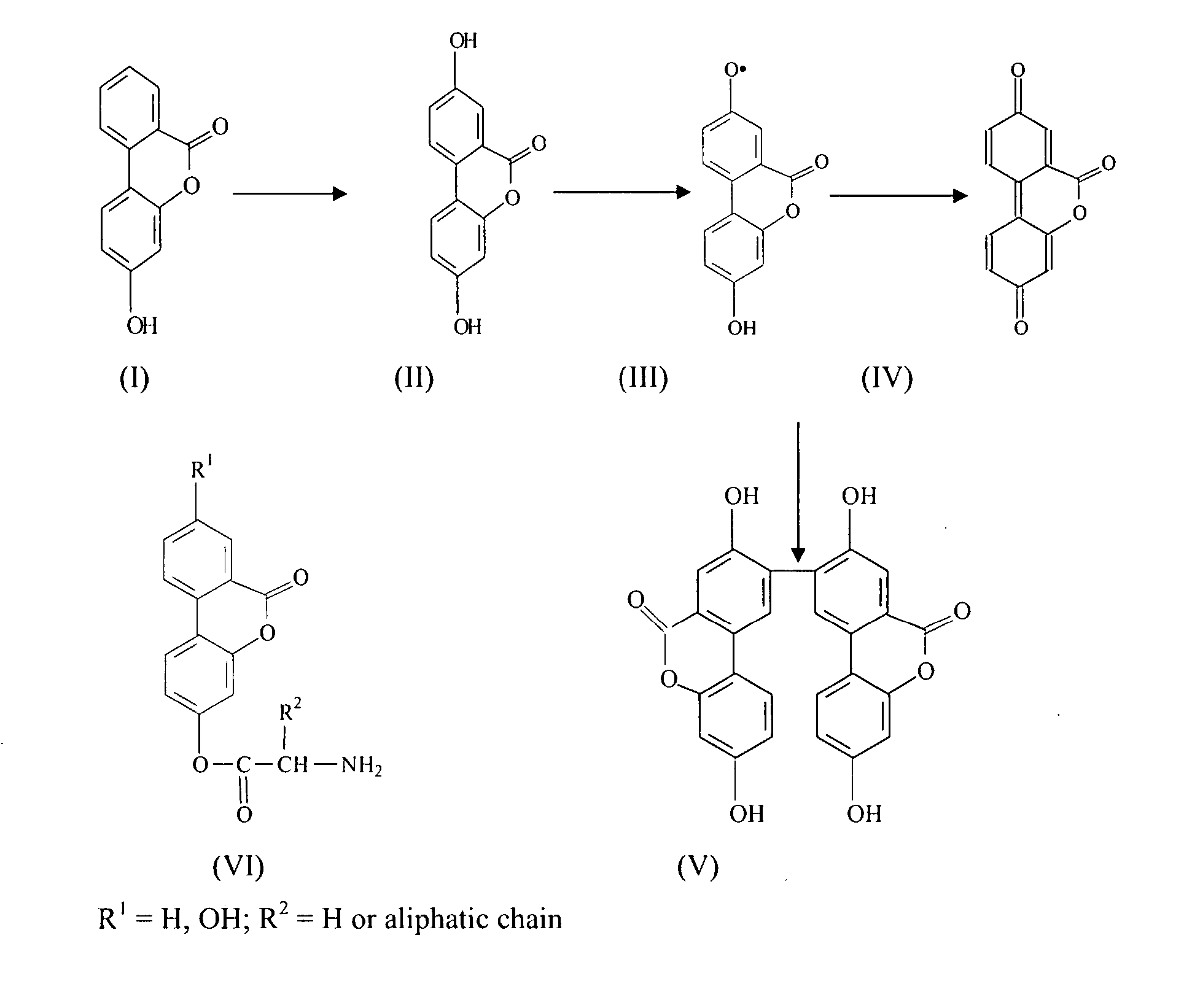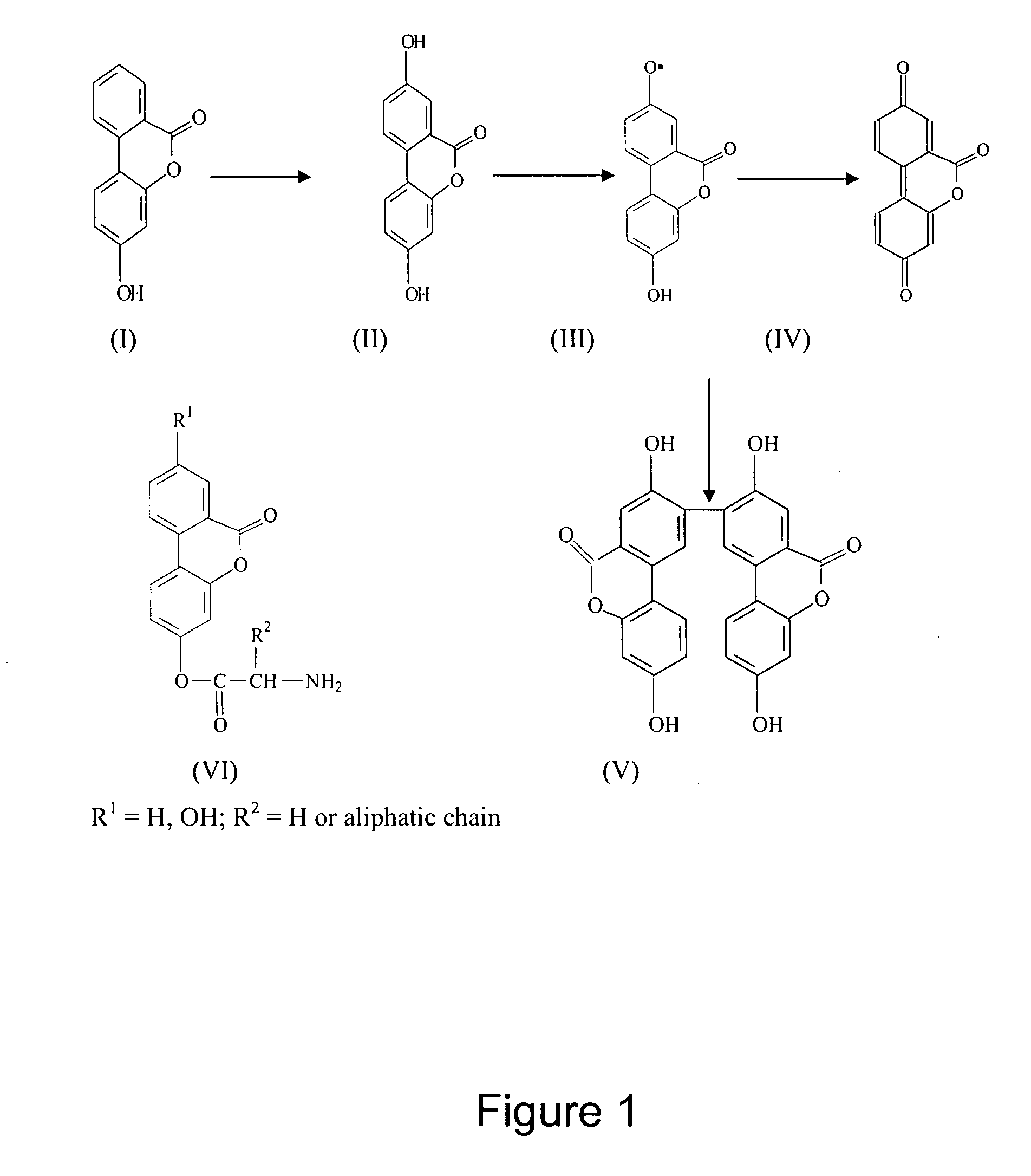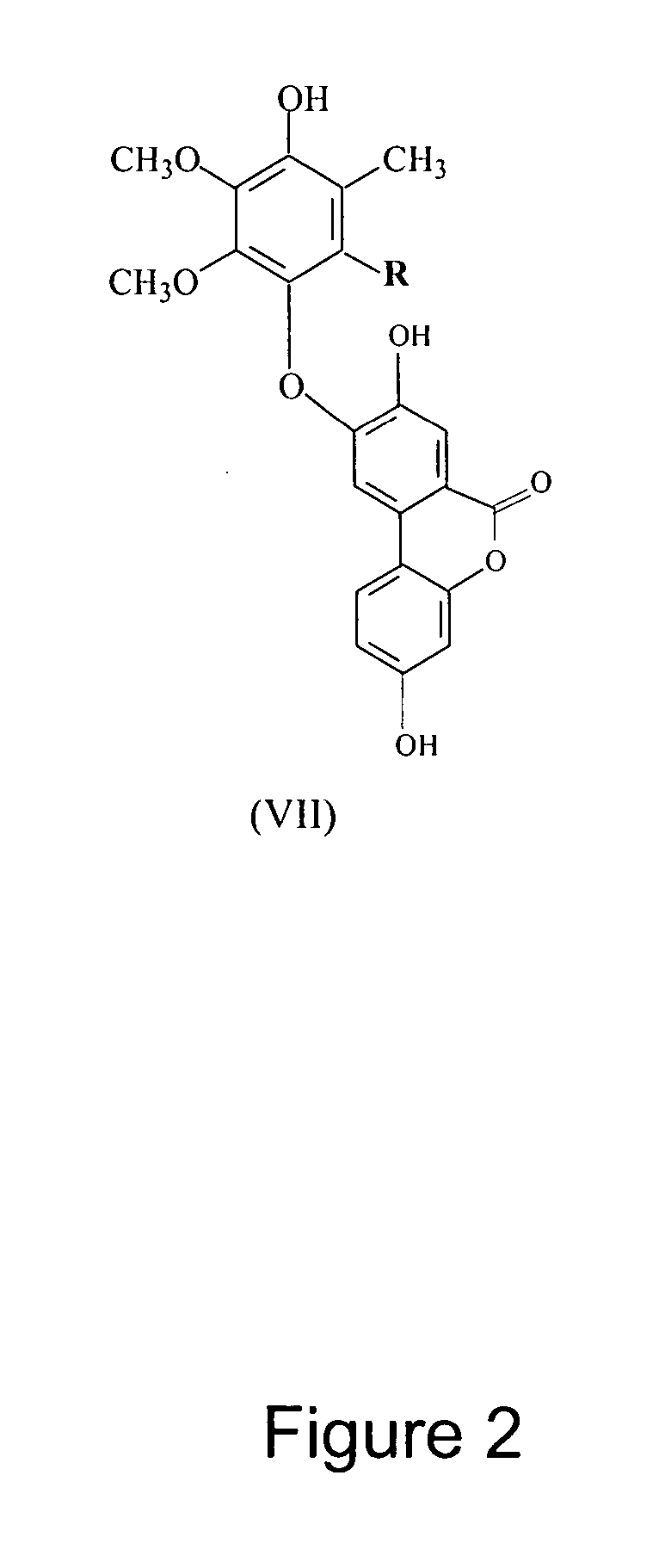Mitochondria-targeted antioxidants
a technology of antioxidants and mitochondria, applied in the field of mitochondria-targeted antioxidants, can solve the problems of difficult interpretation of the effect of exogenous source of coq/sub>10/sub>, damage to mitochondrial dysfunction, etc., and achieve the effect of protecting mitochondrial function and boosting energy
- Summary
- Abstract
- Description
- Claims
- Application Information
AI Technical Summary
Benefits of technology
Problems solved by technology
Method used
Image
Examples
example 1
Chemical Synthesis of 3-hydroxydibenzo-α-pyrone
[0069] 2-Bromobenzoic acid (5.8 grams), resorcinol (5.5 grams) and sodium hydroxide (2 grams) in water (25 ml) were heated under reflux for 10 minutes. After the addition of aqueous copper sulphate (5%, 10 ml), the mixture was refluxed again for 10 min. At the completion of the heating, 3-hydroxydibenzo-alpha-pyrone precipitated as a cream colored amorphous powder (8.7 grams). It was crystallized from ethyl acetate as micro-crystalline solid, m.p. 230-232° C.
example 2
Chemical Synthesis of 3,8-dihydroxydibenzo-α-pyrone
[0070] A mixture of 2-bromo-5-methoxybenzoic acid (5.6 grams), resorcinol (5.5 grams) and sodium hydroxide (2.2 grams) in water (25 ml) was heated under reflux for 30 minutes. After the addition of copper sulphate (5% aqueous solution, 10 ml), the mixture was refluxed again for 10 min when 3-hydroxy-8-methoxydibenzo-alpha-pyrone (3.7 grams) was precipitated as a straw colored powder. Crystallization from methanol and glacial acetic acid, in succession, afforded pale-yellow micro-crystals, m.p. 285-286° C. A suspension of this compound (2.18 grams) in a mixture of glacial acetic acid (120 ml) and azeotropic hydrobromic acid (60 ml) was heated under reflux for 1 hours. The starting material had dissolved within two hours and the desired product, 3,8-dihydroxydibenzo-alpha-pyrone, crystallized out after 6 hours as light yellow powder (1.9 grams). Recrystallization of the product from glacial acetic acid gave pale-yellow needles, m.p. ...
example 3
Chemical Synthesis of 3,3′,8,8′-tetrahydroxy-9,9′-bis-dibenzo-α-pyrone
The DBP-Dimer
[0071] Methanolic solutions of 3,8-dihydroxydibenzo-α.-pyrone (102 mg) and phosphomolybdic acid (108 mg) were mixed and then adsorbed on silica gel (60-120 mesh, 1 gram). It was desiccated and the residue was charged on top of a chromatographic column (silica gel, 12 grams). The column was moistened with light petrol and kept overnight at room temperature (25° C. ±5° C.). Elution of the column with ethyl acetate-toluene (10:90) separated as a yellowish-orange layer. The solvent was evaporated and the residue, an amorphous yellowish-orange powder (41 mg), was collected. A further crop (7 mg) was obtained by eluting the column with aqueous-acetone. DBPs on autooxidation are converted into a yet stable bioactive product, the dimer (structure V, FIG. 1) as established by analytical (HPTLC) and spectroscopic (UV, IR, MS) data.
PUM
| Property | Measurement | Unit |
|---|---|---|
| Mass flow rate | aaaaa | aaaaa |
| Volume | aaaaa | aaaaa |
| Volume | aaaaa | aaaaa |
Abstract
Description
Claims
Application Information
 Login to View More
Login to View More - R&D
- Intellectual Property
- Life Sciences
- Materials
- Tech Scout
- Unparalleled Data Quality
- Higher Quality Content
- 60% Fewer Hallucinations
Browse by: Latest US Patents, China's latest patents, Technical Efficacy Thesaurus, Application Domain, Technology Topic, Popular Technical Reports.
© 2025 PatSnap. All rights reserved.Legal|Privacy policy|Modern Slavery Act Transparency Statement|Sitemap|About US| Contact US: help@patsnap.com



